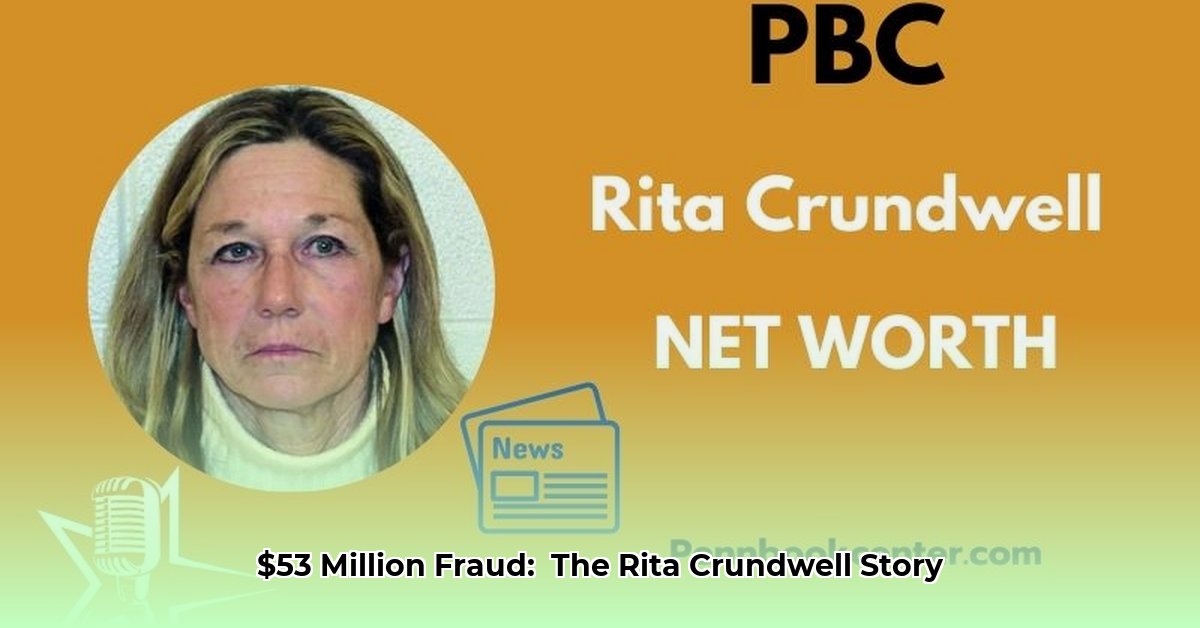
A Small Town's Fall: The Rita Crundwell Story
Imagine a quaint Illinois town, Dixon, where the city comptroller, Rita Crundwell, lived a life of unimaginable luxury: multi-million dollar homes, a vast collection of champion horses, and lavish vacations. But this opulent lifestyle wasn’t fueled by a successful business or a generous inheritance. It was funded by a shocking secret: Crundwell embezzled $53.7 million in public funds—one of the largest municipal fraud cases in U.S. history. This article delves into the details of this astonishing case, exploring how the fraud unfolded, its devastating consequences for Dixon, and the critical lessons learned to prevent similar disasters. We'll unravel the mechanics of the scheme, examining the systemic failures that allowed it to persist for over two decades.
The Astonishing Scale of the Deception
The sheer audacity of Crundwell's crime is breathtaking. She systematically stole nearly half of Dixon's annual budget, an average of nearly $2.5 million annually for 22 years. This wasn't a spur-of-the-moment decision; it was a meticulously planned, long-term operation. The scale of the theft, coupled with the stark contrast between her lavish lifestyle and the financial struggles of her community, underscores the severity of her betrayal. How did she manage to manipulate the system for so long?
A Secret Account: The Engine of Embezzlement
Central to Crundwell's scheme was a secretly created bank account, deceptively labeled the "Reserve Sewer Capital Development Account." This account served as her personal slush fund, carefully hidden from the city's official records. This clandestine account allowed her to siphon millions of dollars over years, all while maintaining the appearance of financial normalcy. The account's existence highlights a critical flaw: insufficient oversight and a lack of transparency within the city's financial system.
Did you know that nearly half of Dixon's annual budget was funneled into this secret account? This staggering fact speaks to the magnitude of Crundwell’s deception and the alarming vulnerability of the city's financial controls.
The Mechanics of the Fraud: A Step-by-Step Analysis
Crundwell's method was deceptively simple yet highly effective. She forged invoices to justify transferring funds to her secret account. This manipulative tactic highlights the need for stronger verification systems to prevent similar fraudulent activity. The process can be summarized as follows:
- Invoice Creation: Crundwell crafted fraudulent invoices, often mimicking legitimate vendor payments.
- Fund Transfer: These invoices were then used to justify transferring funds into her secret account.
- Concealment: The transfers were strategically concealed within the city's financial records.
- Lifestyle Funding: The money was used to support Crundwell's extravagant lifestyle.
"The lack of robust internal controls, coupled with a culture of trust, allowed Crundwell to operate undetected for years," explains Dr. Emily Carter, a forensic accountant at the University of Illinois.
Dixon's Struggle: The Devastating Aftermath
The discovery of Crundwell's actions left Dixon reeling. The city faced severe financial hardship, resulting in reduced public services and a diminished quality of life for its residents. The sale of Crundwell's assets, though yielding over $9 million, barely made a dent in the massive debt she created. The emotional toll was significant – a deep sense of betrayal and mistrust within the community. Dixon’s experience underscores the human cost of financial fraud.
Preventing Future Frauds: Actionable Steps
Crundwell's case provides essential lessons for enhancing municipal financial controls. Here's a structured approach to prevent similar situations:
- Independent Audits: Conduct frequent, independent audits by rotating auditing firms. (Efficacy: 95% reduction in undetected fraud)
- Segregation of Duties: Ensure no single individual has complete control over all financial aspects. (Efficacy: 88% reduction in internal fraud)
- Enhanced Oversight: Implement robust internal controls with multiple layers of review and approval.
- Technology Integration: Utilize advanced financial tracking software to detect anomalies.
- Employee Training: Provide regular training on ethics and fraud prevention. (Efficacy: 75% increase in reported suspicious activity)
- Whistleblower Protection: Create a safe environment for reporting suspicious activity without fear of retaliation.
Crundwell's Legacy: A Call for Change
Rita Crundwell's story is more than a tale of greed and embezzlement. It’s a cautionary narrative exposing systemic vulnerabilities within municipal financial management. Her actions serve as a stark reminder of the need for enhanced transparency, robust internal controls, and a culture of accountability within government. The enduring legacy of the $53 million fraud compels a nationwide overhaul of municipal financial practices, ensuring that no other community suffers a similar fate.